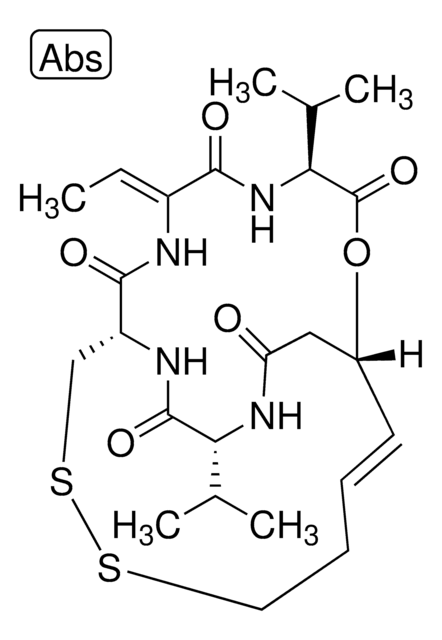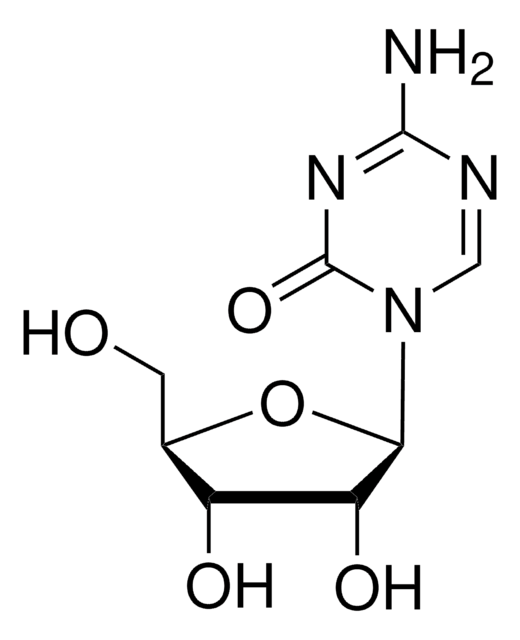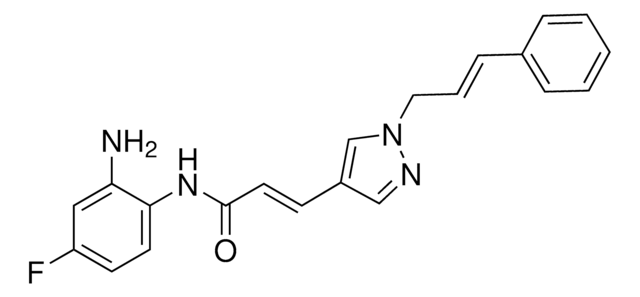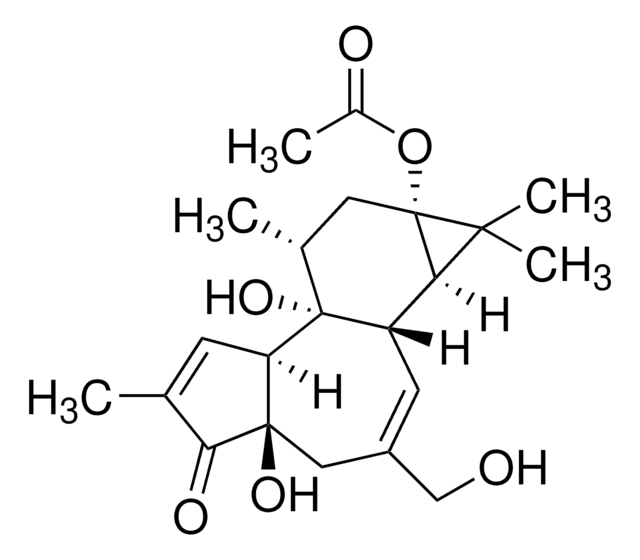SML0061
SAHA
≥98% (HPLC), powder, HDAC inhibitor
Synonym(e):
N-hydroxy-N′-phenyl-octanediamide, Suberoylanilide hydroxamic acid, Vorinostat
About This Item
Empfohlene Produkte
product name
SAHA, ≥98% (HPLC)
Qualitätsniveau
Assay
≥98% (HPLC)
Form
powder
Farbe
white to tan
Löslichkeit
DMSO: ≥15 mg/mL
Versandbedingung
wet ice
Lagertemp.
−20°C
SMILES String
ONC(=O)CCCCCCC(=O)Nc1ccccc1
InChI
1S/C14H20N2O3/c17-13(15-12-8-4-3-5-9-12)10-6-1-2-7-11-14(18)16-19/h3-5,8-9,19H,1-2,6-7,10-11H2,(H,15,17)(H,16,18)
InChIKey
WAEXFXRVDQXREF-UHFFFAOYSA-N
Angaben zum Gen
human ... HDAC1(3065) , HDAC2(3066) , HDAC3(8841) , HDAC6(10013)
Suchen Sie nach ähnlichen Produkten? Aufrufen Leitfaden zum Produktvergleich
Anwendung
Biochem./physiol. Wirkung
Leistungsmerkmale und Vorteile
Signalwort
Danger
H-Sätze
Gefahreneinstufungen
Muta. 2 - Repr. 1A
Lagerklassenschlüssel
6.1C - Combustible acute toxic Cat.3 / toxic compounds or compounds which causing chronic effects
WGK
WGK 3
Flammpunkt (°F)
Not applicable
Flammpunkt (°C)
Not applicable
Analysenzertifikate (COA)
Suchen Sie nach Analysenzertifikate (COA), indem Sie die Lot-/Chargennummer des Produkts eingeben. Lot- und Chargennummern sind auf dem Produktetikett hinter den Wörtern ‘Lot’ oder ‘Batch’ (Lot oder Charge) zu finden.
Besitzen Sie dieses Produkt bereits?
In der Dokumentenbibliothek finden Sie die Dokumentation zu den Produkten, die Sie kürzlich erworben haben.
Kunden haben sich ebenfalls angesehen
Artikel
We presents an article on Autophagy in Cancer Promotes Therapeutic Resistance
Epigenetic modifications are thought to occur through two key interconnected processes—DNA methylation and the covalent modification of histones.
Unser Team von Wissenschaftlern verfügt über Erfahrung in allen Forschungsbereichen einschließlich Life Science, Materialwissenschaften, chemischer Synthese, Chromatographie, Analytik und vielen mehr..
Setzen Sie sich mit dem technischen Dienst in Verbindung.












